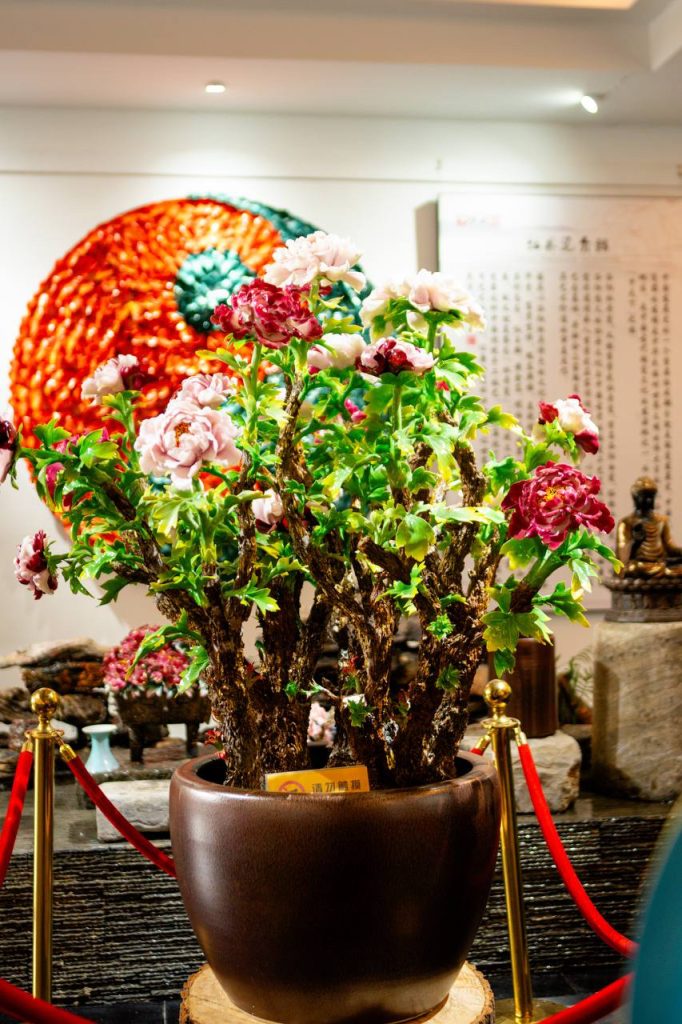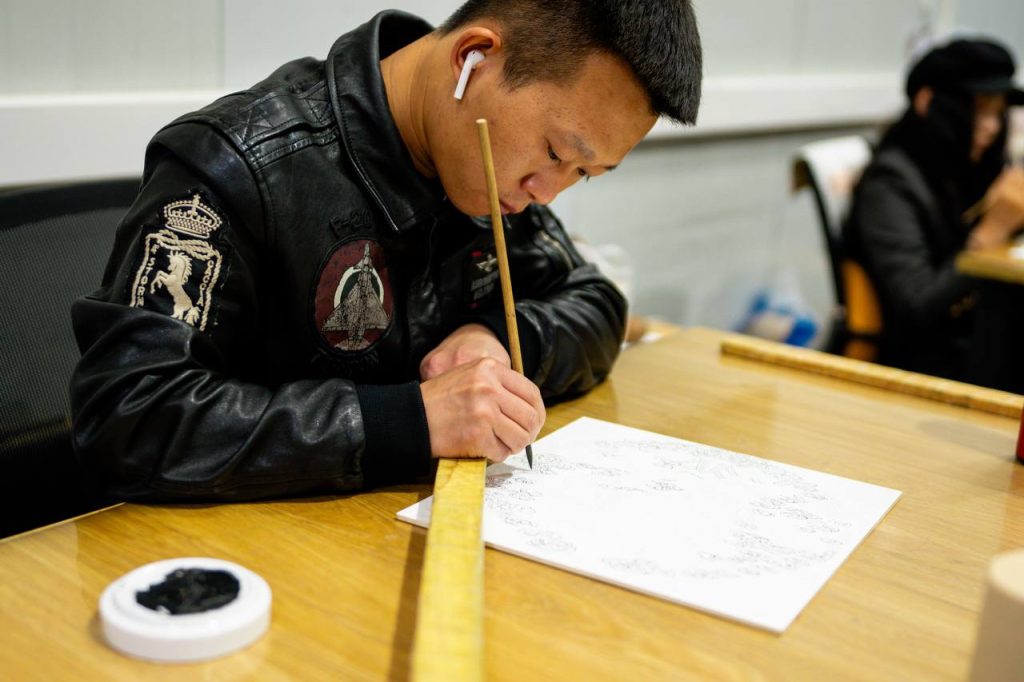
In the heart of Henan Province, the Peony Porcelain Museum offers an exquisite celebration of art, craftsmanship, and the enduring symbolism of China’s national flower—the peony. A visit to this museum is not merely an exploration of fine porcelain but also a journey through the intersection of tradition, innovation, and the natural beauty that has inspired Chinese culture for centuries. For me, a journalist from the Maldives, it was a mesmerizing experience that revealed how art can serve as a bridge between heritage and modernity.
The Peony’s Significance in Chinese Culture
Known as the “King of Flowers” in Chinese tradition, the peony symbolizes prosperity, elegance, and beauty. Its association with wealth and honor has made it a beloved motif in art, literature, and design throughout Chinese history. The city of Luoyang, often called the “City of Peonies,” is renowned for its connection to these flowers, and the museum stands as a tribute to this rich legacy.

A Grand Welcome: First Impressions
The Peony Porcelain Museum itself is an architectural marvel. The building’s design incorporates motifs of the peony, with intricate floral patterns adorning the facade and entrance. The modern structure is complemented by traditional Chinese aesthetics, immediately setting the tone for what lies within—a harmonious blend of old and new.
Inside, the museum opens up into a spacious and well-lit gallery. Delicate porcelain pieces are displayed in elegant cases, each thoughtfully arranged to highlight the craftsmanship and storytelling behind them. The museum staff greeted us warmly and provided an introduction to the exhibits, emphasizing the cultural and historical importance of porcelain in Chinese society.

The Art of Porcelain: A Timeless Craft
Porcelain, often referred to as “China’s white gold,” has been a symbol of the nation’s artistic and technological prowess for centuries. The museum showcases a stunning array of porcelain works, all intricately designed with peony motifs. These pieces include vases, plates, sculptures, and even jewelry, each demonstrating the unparalleled skill of Chinese artisans.
Historical Masterpieces
The museum houses several porcelain items from the Tang and Song Dynasties, eras when Chinese porcelain reached its peak. A standout piece was a Tang Dynasty vase adorned with painted peonies, its vibrant colors remarkably preserved despite being over a thousand years old. This artifact exemplifies the marriage of function and beauty that has defined Chinese porcelain since its inception.
Another remarkable exhibit featured Song Dynasty celadon porcelain, famed for its jade-like glaze. The subtle elegance of these pieces contrasted beautifully with the more intricate, colorful designs of later periods, showcasing the diversity within the art form.
Modern Innovations
While the historical pieces were captivating, the museum also highlights contemporary innovations in porcelain-making. Modern artisans have embraced advanced techniques to create pieces that push the boundaries of traditional design. A series of translucent porcelain vases, with delicate peonies etched onto their surfaces, demonstrated the interplay of light and texture in a way that was almost ethereal.
Interactive Exhibits: A Hands-On Experience
One of the museum’s most engaging features was its interactive section, where visitors could observe artisans at work. Watching these skilled individuals mold, paint, and glaze porcelain was a fascinating glimpse into the painstaking process behind each piece. Their steady hands and meticulous attention to detail reflected a dedication that has been passed down through generations.
For those eager to try their hand at this ancient craft, the museum offered workshops where visitors could paint their own porcelain designs. As someone with no prior experience in pottery, I found the activity both challenging and immensely rewarding. The opportunity to create a simple peony pattern on a small porcelain tile deepened my appreciation for the expertise required to produce the masterpieces on display.
The Peony Room: A Feast for the Eyes
A highlight of the museum was the Peony Room, a gallery dedicated entirely to peony-themed porcelain. This room was a vibrant explosion of colors and patterns, with pieces ranging from minimalist monochromatic designs to elaborate, multi-colored creations. A particularly striking exhibit was a porcelain peony sculpture that stood over a meter tall. Its petals, delicately shaped and painted, seemed almost alive—a testament to the artist’s skill and imagination.
The room also included multimedia displays that explored the cultural symbolism of the peony across different eras. These exhibits offered insights into how the flower has inspired not only visual art but also poetry, music, and fashion. The combination of porcelain art and digital storytelling made the experience both educational and emotionally resonant.
Connecting Heritage with Modern Life
Beyond its artistic and historical significance, the Peony Porcelain Museum highlights how traditional craftsmanship continues to influence modern life. The museum’s gift shop featured a range of porcelain items for everyday use, from tea sets to jewelry, all designed with a contemporary twist. These items demonstrated how age-old techniques could be adapted to suit contemporary tastes while preserving their cultural essence.

The museum also collaborates with designers and brands to incorporate porcelain art into modern interiors, fashion, and even technology. A showcase of porcelain-inspired home decor illustrated how this timeless material remains relevant in today’s world.
A Global Perspective
The Peony Porcelain Museum doesn’t just celebrate Chinese art—it also emphasizes its global impact. Porcelain has long been a symbol of China’s cultural and economic influence, famously giving rise to the term “china” for fine ceramics worldwide. Exhibits on the export of Chinese porcelain during the Ming and Qing Dynasties underscored how this art form fostered cultural exchange and shaped tastes in Europe, the Middle East, and beyond.
As someone from the Maldives, a nation with its own history of maritime trade and cultural exchange, I found these connections particularly meaningful. The museum’s portrayal of porcelain as a bridge between cultures resonated deeply with me, emphasizing the universal appeal of beauty and craftsmanship.
Reflections on the Visit
The Peony Porcelain Museum is more than just a repository of exquisite art; it is a celebration of the values and traditions that have shaped Chinese culture for millennia. The museum’s focus on the peony as a symbol of prosperity and beauty added a poetic dimension to the experience, reminding me of the ways in which nature inspires human creativity.
What struck me most was the seamless integration of tradition and modernity throughout the museum. From ancient masterpieces to contemporary innovations, the exhibits illustrated how heritage can evolve without losing its essence. This message is particularly relevant in today’s fast-changing world, where preserving cultural identity is both a challenge and an opportunity.
An Invitation to Discover
For art enthusiasts, history buffs, and cultural travelers alike, the Peony Porcelain Museum is a must-visit destination. Its captivating exhibits, hands-on experiences, and thoughtful storytelling make it an enriching journey into one of China’s most cherished art forms.
As I left the museum, I felt a renewed appreciation for the universal language of art and its ability to transcend time, geography, and culture. The Peony Porcelain Museum is not just a showcase of porcelain—it is a testament to the enduring power of beauty and creativity to connect us all.
